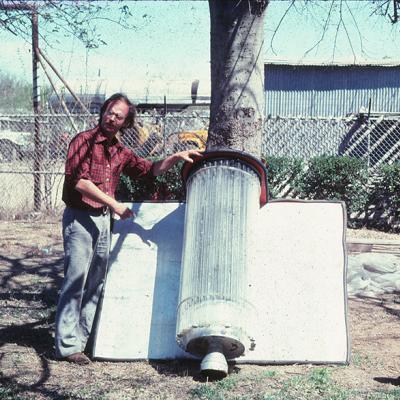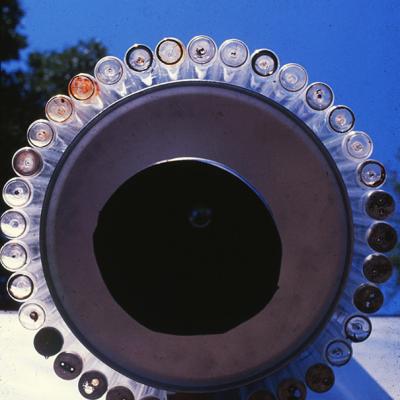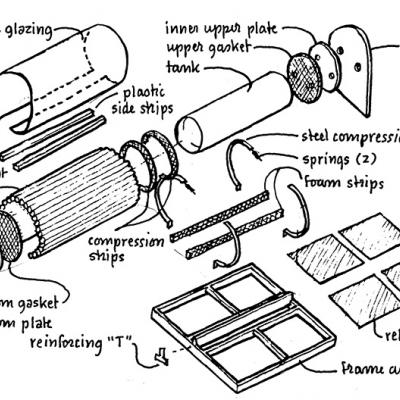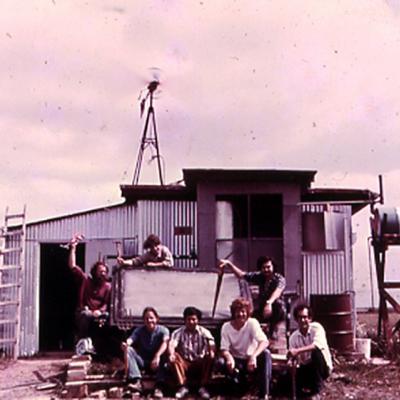Crystal City
A small town in South Texas had its gas cut-off in the winter of 1977 due to a contract dispute with the town’s monopoly gas supplier, leaving the 8,100 residents without heat and hot water. Posing an immediate health risk, the Zavala County Community Development Corporation contacted the Center to assist in an emergency response capacity.
The initial response provided space heating for the town’s residences, with about 1,200 surplus Korean tent wood-burning stoves installed in six weeks coupled with a community mobilization to collect mesquite wood from dry stream beds. The engagement evolved to develop a simple, low-cost, integral passive solar water heating system made of recovered materials, including spent fluorescent light bulbs and used printing plates, costing about $25 for new materials. The fluorescent bulbs were an ideal glazing material because they provided solar concentration and double-glazing. The mercury in the fluorescent light bulbs was safely recovered and collected for recycling.
With funding from the U.S. Community Services Administration and the National Center for Appropriate Technology, a community-based solar water heater factory was designed and put into operation, with a local crew trained to manufacture six solar water heaters per day with four employees at a unit cost of about $125.00. The federal funding supported the manufacture and installation of about 500 solar water heaters in five counties, some of which are still in operation today. Crystal City's solar water heater factory was replicated in five other south Texas towns, creating green jobs and "fueling" the towns with abundant solar energy.
FUNDING:
National Center for Appropriate Technology; U.S. Community Services Administration
PROJECT TEAM:
Pliny Fisk III; Jeff Lanza; Tom Teasdale
1977




